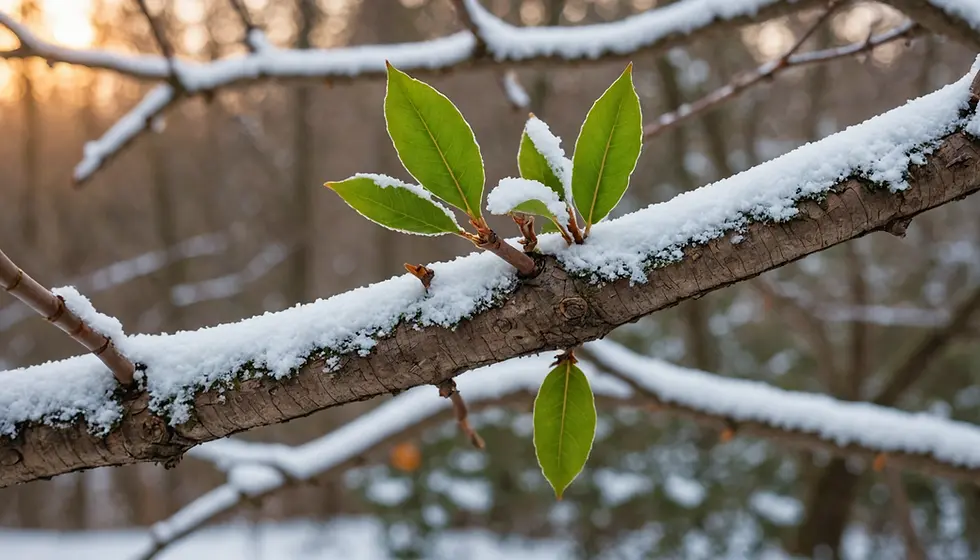5 Key Tree Diseases Threatening Massachusetts Trees: Prevention and Management Strategies
- Dana Wilson
- Nov 20, 2024
- 3 min read
Ensuring the health of trees in Massachusetts is vital for preserving our landscapes. Trees enhance property value, provide shade, and support local ecosystems. However, several diseases threaten their vitality. This blog covers five major tree diseases along with preventive strategies and examples to help protect these valuable community assets.
Dutch Elm Disease (DED)
Dutch Elm Disease (DED) poses a serious threat to elm trees. It spreads when elm bark beetles carry the fungus from tree to tree. Once trees are infected, they display symptoms like wilting leaves and yellowing canopies. According to the United States Forest Service, over 75% of elm trees in urban areas have been lost to this disease.
To prevent DED, property owners should regularly inspect their trees and remove any infected ones immediately. In Massachusetts, fungicidal treatments can protect healthy elms, especially in neighborhoods with a past history of DED. Regular monitoring can allow for early detection and intervention, significantly improving the chances of saving affected trees.

Beech Bark Disease
Beech Bark Disease results from an invasive insect, the beech scale, and an accompanying fungal infection. This poses a significant risk to American beech trees, causing bark lesions and overall health decline. It has been reported that in some areas, more than 50% of beech trees can show signs of infection.
Preventative measures include inspecting beech trees for any early signs of infestation. If found, affected trees should be removed to limit the disease spread. Encouraging predators like certain beetles can also effectively manage insect populations, reducing the likelihood of further infestations.
Oak Wilt
Oak Wilt is a fast-acting fungal disease affecting oak trees in Massachusetts. It can lead to rapid leaf discoloration and tree death within weeks of symptoms appearing. The disease has a dramatic impact; in some recent outbreaks, up to 90% of infected oak trees have died if untreated.
To prevent Oak Wilt, avoid pruning oak trees during peak beetle activity seasons, typically in spring and early summer. Applying fungicides early can add protection. Additionally, disrupting root grafts in areas where trees are infected can help prevent the disease from spreading to healthy trees.
Arborvitae Needle Blight
Arborvitae Needle Blight is a fungal infection that primarily targets arborvitae and similar coniferous trees. Symptoms include browning needles and overall decline in health. In severe cases, affected trees can lose up to 50% of their needles, weakening them significantly.
To manage this disease, regularly prune infected branches to improve air circulation around the foliage. Improved airflow can reduce humidity and create a less favorable environment for fungal growth. In severe cases, applying fungicides may also be necessary to combat the infection.
Phyllosticta Leaf Blotch
Phyllosticta Leaf Blotch is a fungal disease affecting various hardwoods, leading to leaf spots and premature leaf drop. This condition can weaken trees over time. Studies show that trees with persistent infections may exhibit up to 40% reduced growth.
To minimize the risk of Phyllosticta Leaf Blotch, collect and destroy fallen leaves each autumn. This helps reduce the chance of fungal spores overwintering. Additionally, ensuring proper irrigation and spacing between trees can significantly lower moisture levels on leaves, decreasing the likelihood of an outbreak.
General Tree Disease Prevention Tips
In addition to disease-specific strategies, here are several general tips property owners can implement to maintain tree health in Massachusetts:
Select Disease-Resistant Species: Choose tree varieties resistant to local diseases when planting new ones.
Proper Planting and Soil Health: Ensure trees are correctly planted and that soil conditions are healthy, creating a strong foundation for growth.
Watering and Fertilization: Avoid overwatering to prevent root diseases and use fertilizers judiciously to maintain nutrient balance.
Sanitize Tools: Sanitize pruning tools before use to avoid spreading diseases between trees.
Regular Inspection: Regularly inspect trees for early signs of disease, making early detection critical in managing their health.
By following these preventive measures and staying informed about common tree diseases, property owners can help ensure Massachusetts’ trees remain robust and resilient. Healthy trees enhance community aesthetics, provide environmental benefits, and improve quality of life.
Final Thoughts
Maintaining tree health is crucial for responsible property management in Massachusetts. Understanding the diseases that threaten trees and applying effective preventive strategies can prolong their lives. By taking action now, property owners can cultivate healthier trees, contributing to the beauty and ecological value of their landscapes for future generations.
Sources: UMass Extension Landscape, Nursery, and Urban Forestry Program.



